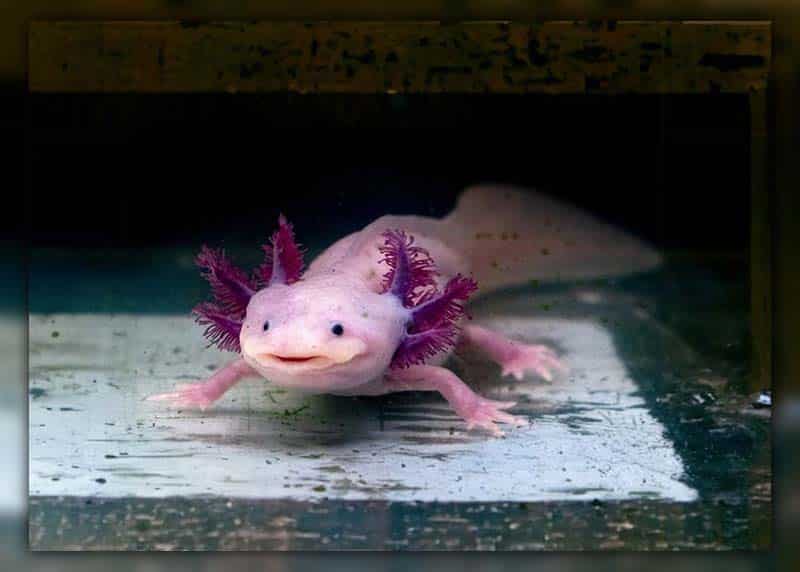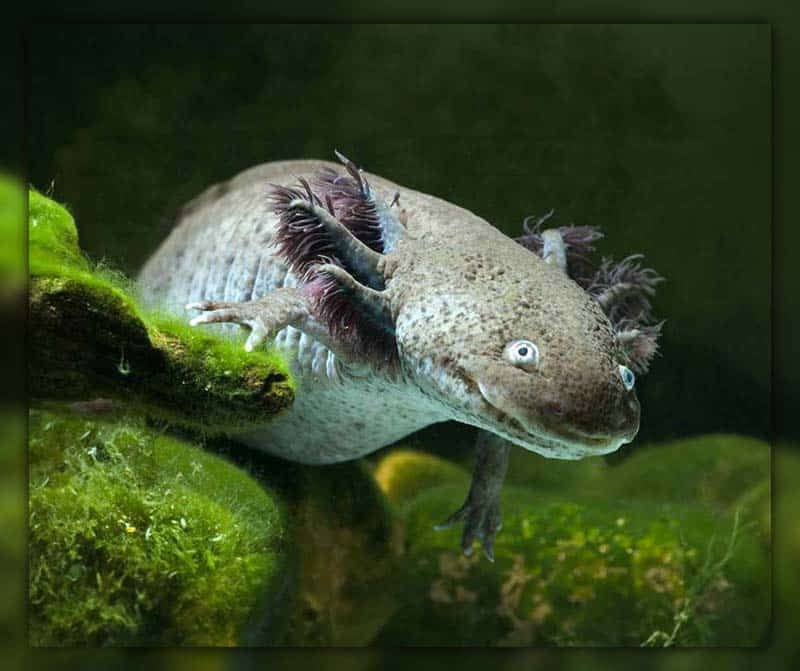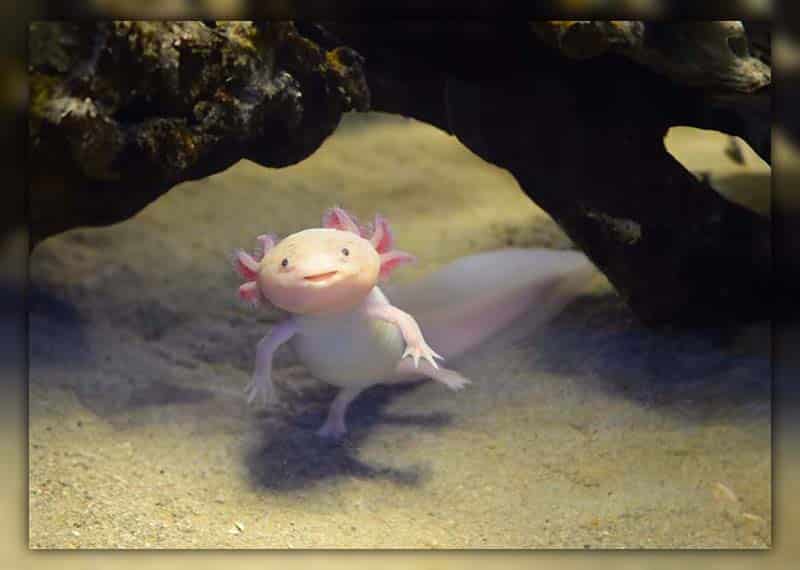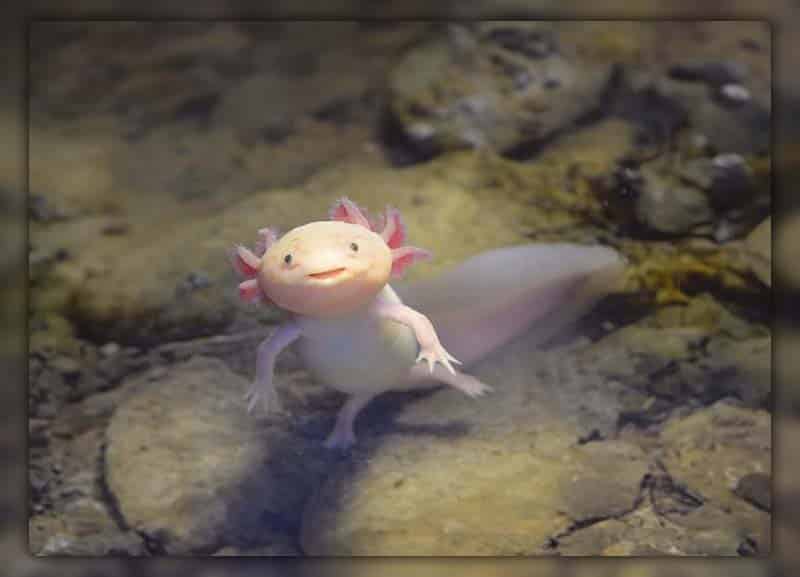Axolotls, the aquatic salamanders known for their enchanting appearance, originate from the lakes near Mexico City but are sadly on the brink of extinction in the wild. As they thrive in their life cycle completely underwater, they’ve sparked curiosity among enthusiasts, leading to their increasing popularity as unique pets. Interestingly, their population in captivity far surpasses that in their natural habitat.
In this article, we’ll delve into the life journey of axolotls, from their birth as eggs to maturity, and compare axolotls lifespan and stages to other salamanders.
Axolotl Development and Lifecycle
Axolotls lead captivating lives, existing entirely in the aquatic realm, even during their breeding rituals, which occur from December to June. During this season, females can lay up to a staggering 1000 eggs.
As these eggs hatch, axolotls find themselves encased in a jelly-like substance. They gradually develop their head and body before transitioning into the larval stage. In their infancy, baby axolotls are translucent and initially lack limbs. It takes about two weeks for their legs to form, and they remain in this larval stage for approximately six months, after which they attain sexual maturity, becoming capable of breeding.
How Long Do Axolotls Live?
In captivity, axolotls generally have a lifespan of 10-15 years. However, with exceptional care, they can thrive and live beyond 20 years. The record age for an axolotl remains a mystery, but as they gain popularity as pets, we might be in for some surprises. After all, some salamander species are known for their remarkably long lifetimes

How Long Do Axolotls Live in Their Natural Habitat?
Life is more challenging for axolotls in their natural habitat. Here, they live for about five to ten years, facing the constant threats of habitat loss, disease, and predators.
How Long Do Axolotls Live in Captivity?
In captivity, axolotls enjoy a longer life, usually ranging from 10 to 15 years. Exceptional care can even extend their lifespan to over 20 years. It’s essential to understand that proper care is crucial for these sensitive creatures.
How Long Do Axolotls Live as Pets?
If you’re considering adopting an axolotl as a pet, be prepared for a significant commitment. When well-cared-for in a home aquarium, axolotls generally reach between 10 and 15 years, with a median lifespan of about 12 years. Exceptional care can push this to an impressive 20 years or more. However, it’s crucial to stress that these remarkable lifespans are only achievable with consistent and attentive care.

What are the Most Common Causes of Axolotl Death?
Understanding these factors is critical to providing the best care and health for these fascinating aquatic friends. Here are some possible causes of Axolotl’s death:
Predators
Axolotls lack significant self-defense mechanisms. They are slow-moving and lack teeth or claws, making them vulnerable to predators in the wild. Additionally, invasive species introduced to their native habitat have posed a threat to axolotls.
Pollution
The small native habitat of axolotls in the lakes near Mexico City has been a major challenge for their population. Water pollution nearly led to their extinction in 2010, and they remain endangered in the wild due to ongoing pollution issues.

Health Problems
Axolotls are susceptible to various health problems, including fluid build-up, tumors, bacterial and fungal infections, and parasites. Some of these health issues are exacerbated by inbreeding, as their gene pool continues to shrink in the wild. Many health conditions can also result from poor care in captivity, such as inadequate filtration, dirty water, or injuries due to improper tank setup or handling.
Poor Care
Axolotls are susceptible to various health problems, including fluid build-up, tumors, bacterial and fungal infections, and parasites. Some of these health issues are exacerbated by inbreeding, as their gene pool continues to shrink in the wild. Many health conditions can also result from poor care in captivity, such as inadequate filtration, dirty water, or injuries due to improper tank setup or handling.
6 Ways to Ensure Your Pet Axolotl Lives a Long Life
Yes, axolotls are fragile and sensitive creatures, but you can take steps to ensure they live long and healthy lives. Here are some essential tips:

Ideal Water Parameters
Maintain a water temperature between 60 and 64°F (15-18°C) using a cooling unit if necessary. Monitor water temperature with an aquarium thermometer. Keep the pH level between 6.5 and 8.0, with an ideal range around 7.2. Water hardness should be moderate, between 7 and 14 dGH.
A Clean Tank
Axolotls are highly sensitive to dirty water, particularly to ammonia and nitrates. Regularly perform 30% water changes to remove contaminants. Clean the tank thoroughly at least once a week, and ensure your filter provides mechanical, biological, and chemical filtration.
The Right Food
Feed your axolotls a high-quality diet that meets their high protein requirements. Offer insects, insect larvae, fish fry, daphnia, worms, cooked lean chicken, lean beef, and cooked shrimp. Freeze-dried foods are preferable to live or frozen foods to prevent parasites.
Minimal Handling
Feed your axolotls a high-quality diet that meets their high protein requirements. Offer insects, insect larvae, fish fry, daphnia, worms, cooked lean chicken, lean beef, and cooked shrimp. Freeze-dried foods are preferable to live or frozen foods to prevent parasites.
The Right Tank Setup
Choose an appropriate substrate, such as high-quality aquarium sand designed to prevent impaction. Axolotls often ingest substrate while feeding, so proper substrate is essential to prevent digestive issues.

The Right Tank Mates
Opt for suitable tank mates, such as other axolotls, small and peaceful fish like minnows, snails, and shrimp. Avoid larger, fast-swimming, territorial, aggressive, or bottom-dwelling fish, as they can stress or harm your axolotl.
>> Explore more: 10+ Best Axolotl Tank Mates (With Pictures)
Conclusion
In a nutshell, if you’re curious about how long do axolotls live, it’s a captivating tale of their lifespans in the wild and as cherished pets. While they typically have shorter lives in nature, providing them with the right care and conditions in captivity can lead to much longer lifespans, often reaching up to 15 years or more.
For more in-depth information about axolotls and other aquatic topics, we invite you to explore our extensive blog collection at National Park Aquarium. You’ll find valuable insights on caring for these unique creatures and unraveling the mysteries of aquatic ecosystems. Dive into the sea of knowledge and embark on an exciting aquatic journey with us.




